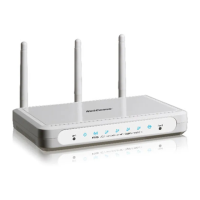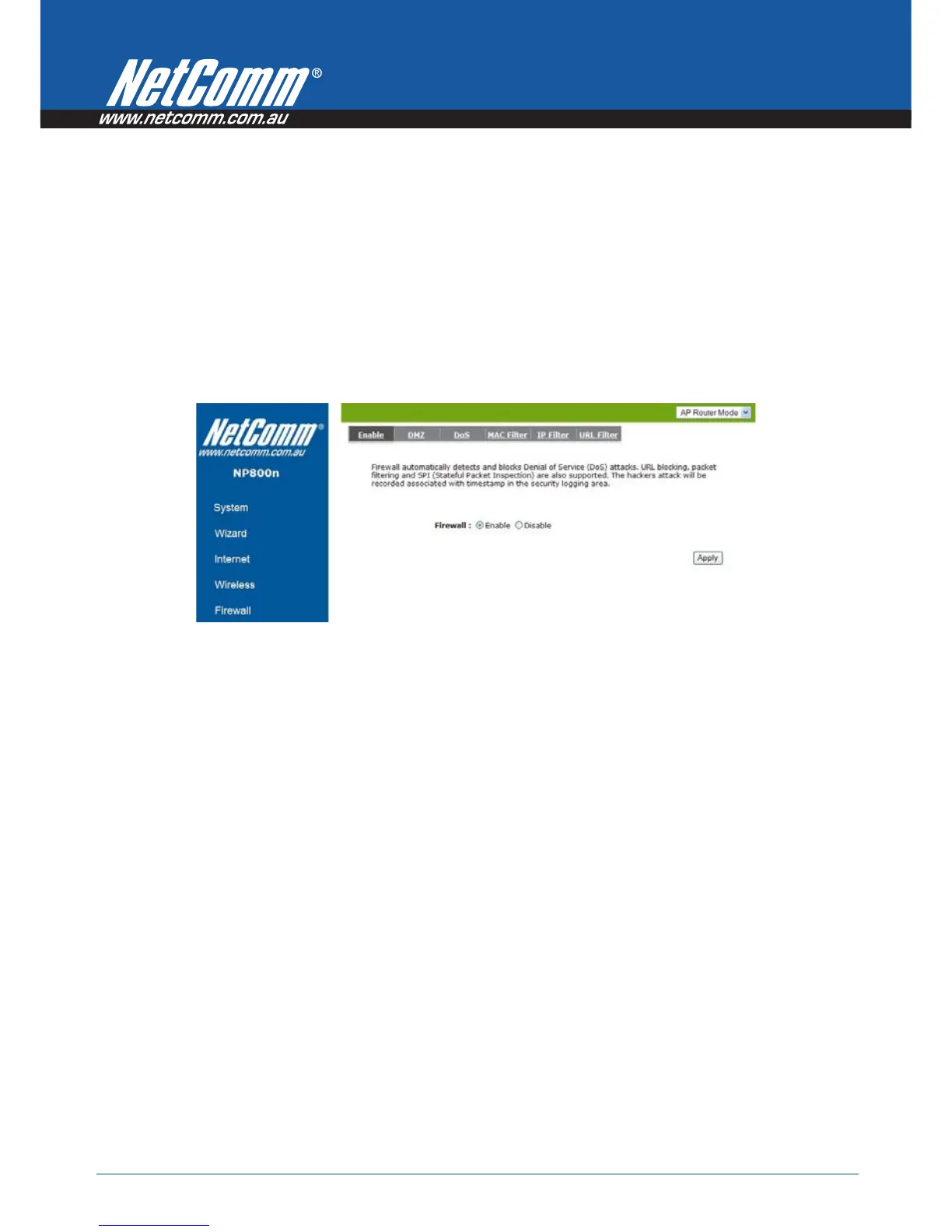

Do you have a question about the NetComm 802.11 and is the answer not in the manual?
| Brand | NetComm |
|---|---|
| Model | 802.11 |
| Category | Wireless Router |
| Language | English |
Introduces the NetComm Power 0 Series Wireless Router, its features, and benefits.
Lists all items included in the NetComm Power 0 Series router package.
Highlights the main features and advantages of the NetComm Power 0 Series Wireless Router.
Provides guidance on optimal placement of the router for best wireless network coverage.
Lists common obstacles and devices that can cause interference with wireless signals.
Explains how cordless phones, especially those operating on 2.4GHz, can impair wireless network performance.
Guides users on selecting the optimal wireless channel to avoid interference from neighboring networks.
Details the features and indicators located on the front panel of the router.
Describes the various ports available on the rear of the router for connectivity.
Lists the minimum system and network requirements for using the 800n Series router.
Outlines the necessary requirements for the DSL or Cable modem to connect to the router.
Step-by-step guide on physically connecting the NetComm router to the modem and power.
Details the process of configuring the router, including PC network adapter setup.
Instructions on how to access the router's web interface for configuration.
Displays the current operational status of the router, including uptime and version information.
Shows details of the WAN port connection, including IP address and DNS.
Displays the router's current LAN configuration, including IP address and DHCP status.
Shows current wireless network configuration, including SSID and security settings.
Displays the current internet connection type and status details.
Configuration options for obtaining an IP address dynamically from the ISP.
Configuration for manual IP address assignment by the ISP.
Setup for PPPoE internet connection, requiring ISP username and password.
Configuration for PPTP internet connection for secure, local access.
Sets parameters like SSID, Channel, Radio, Mode, and Band for wireless connections.
Configures Wireless Distribution System for extending wireless networks using multiple access points.
Allows selection of SSID and control over broadcasting the network name for security.
Explains WMM for QoS and general encryption options for network security.
Configures 802.1x authentication using a RADIUS server for secure access.
Configures WEP encryption with options for key length and type for wireless security.
Sets up WPA with a pre-shared key for secure wireless authentication and data encryption.
Configures WPA encryption using an external RADIUS server for authentication.
Enables MAC address filtering to control access to the wireless network.
Guides on adding and removing MAC addresses to/from the access control list.
Explains how to enable/disable WPS and check its current configuration status.
Details Self Pin Code, SSID, Authentication Mode, Passphrase Key, and Interface for WPS setup.
Displays a list of wireless clients currently connected to the router.
Allows enabling or disabling the router's firewall for network protection.
Configures DMZ to provide unrestricted internet access to specific internal PCs.
Configures protection against DoS attacks and other common internet threats.
Filters network access based on MAC addresses, allowing or denying specific devices.
Filters network access based on IP addresses, allowing or denying specific devices.
Blocks access to specific websites by URL or keywords.
Configures NAT to allow multiple hosts to access the internet using a single public IP address.
Redirects service port numbers to specific PCs behind the NAT firewall.
Configures the router as a Virtual Server to allow remote access to internal services.
Configures port triggering for internet applications that require multiple connections.
Manages application-specific traffic passing through the NAT gateway.
Enables automatic network discovery and configuration for devices on the network.
Controls bandwidth throughput based on hardware port for LAN/WAN traffic.
Manages bandwidth and priority for specific applications and IP addresses.
Reserves or limits throughput for specific protocols, IP ranges, and port ranges.
Configures static routing rules for directing network traffic.
Allows changing the router's web-based management password.
Sets the router's time zone, NTP server, and configures daylight saving.
Maps a static domain name to a dynamic IP address using DDNS services.
Enables or disables power saving features for WLAN interfaces.
Diagnoses the current network status by pinging devices.
Allows upgrading the router's firmware to the latest version.
Saves current configurations and restores them, or resets to factory defaults.
Resets the router to its default settings or restarts it if it stops responding.
Monitors the current status of the router in repeater mode.
Configures LAN settings like IP address and subnet mask in repeater mode.
Sets up schedules for power saving services in repeater mode.
Displays system operation logs for the router in repeater mode.
Monitors network connection bandwidth histograms in repeater mode.
Allows selection of the user interface language for the web pages.
Sets parameters like Mode, SSID, Channel Number, and Associated Client for wireless connection.
Scans for available wireless access points and connects to them.
Displays a list of wireless clients connected to the router.
Outlines the terms and conditions of the product warranty.
Details the limitations and exclusions applicable to the product warranty.